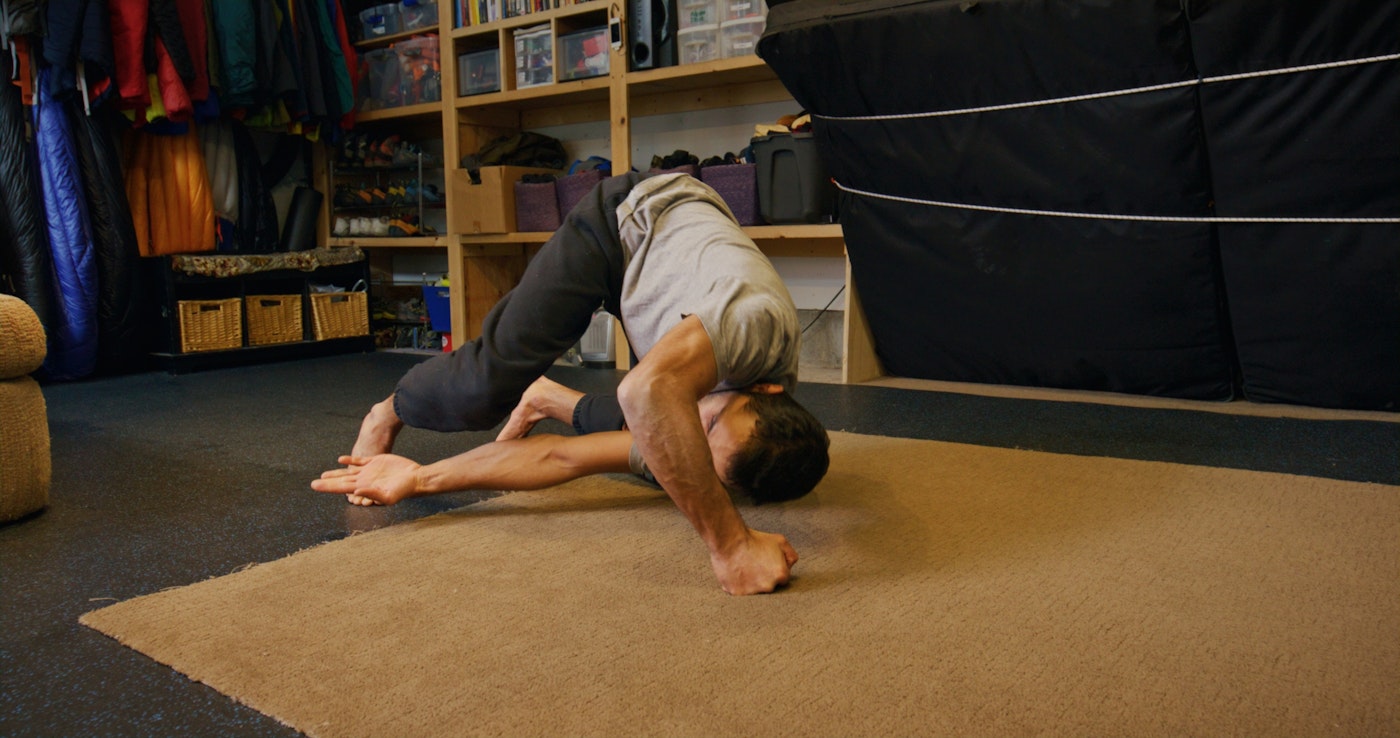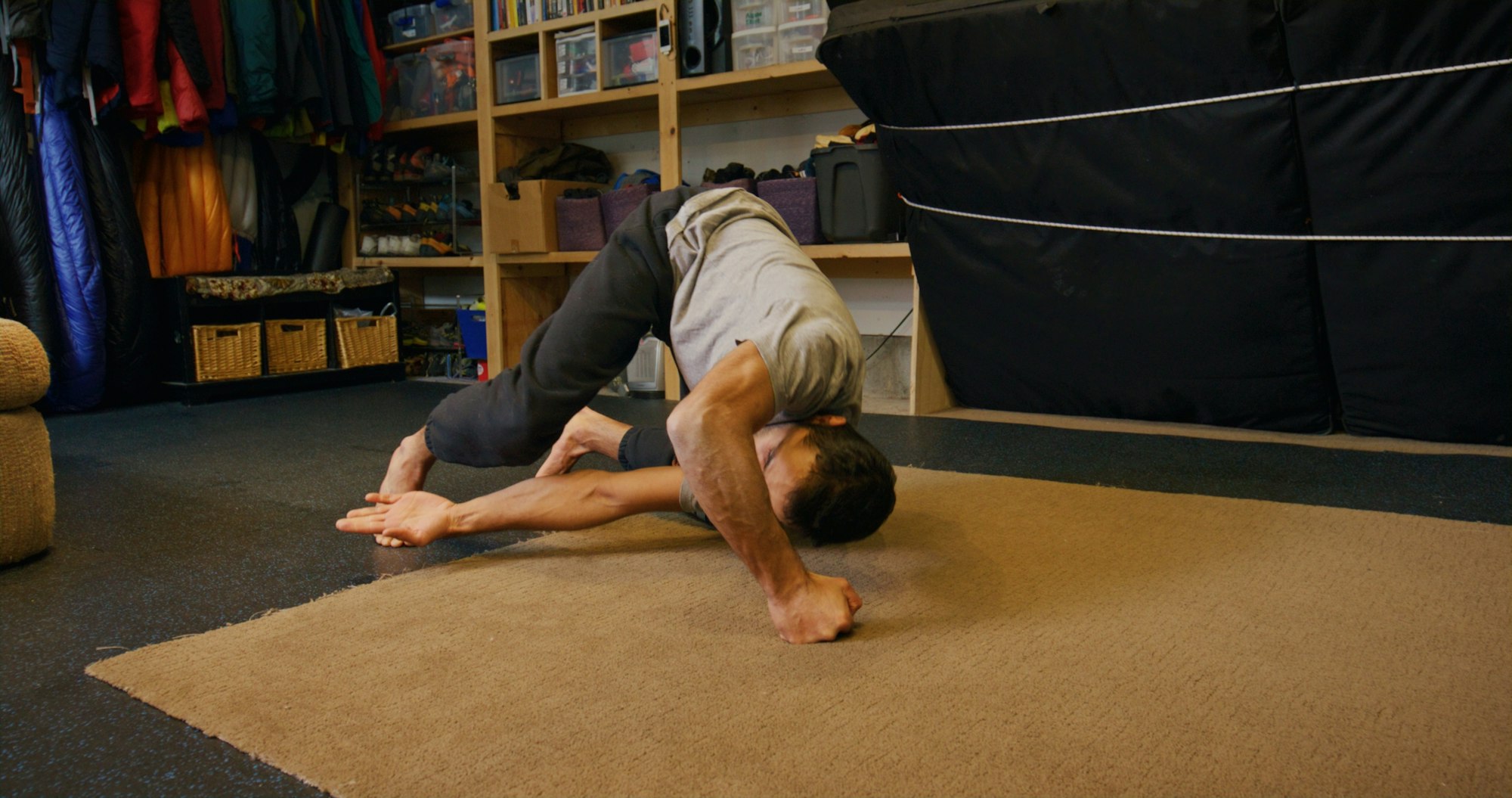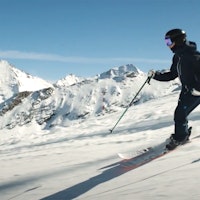Featured Image: Morgan Shields
Summers are a great opportunity to get back to the basics and start training for next winter. It’s tempting to want to buy the latest and greatest in training products, but Zahan Billimoria, founder of The Samsara Experience explains that all you really need is yourself and a want to become more athletic.
With a focus on mobility, Zahan sat down with FREESKIER to break down his guide to getting in shape in the off-season.
How do you recreate the skiing experience during off-season training?
I don’t think you try and recreate skiing or any sport in training. My take is that instead of trying to replicate the sport, what we should do is go back to the fundamentals of human athleticism and train that.
Sports have way more in common than we sometimes recognize. They rely on balance, agility, etc—and if we train those core human attributes, we can apply them to many sports. I think that is much better for our bodies because instead of reinforcing the stress of one sport (that if done too much usually causes injuries) we train the body in a way that respects its natural blueprint…the way it was made. At Samsara we always say “train athletic” meaning develop raw athleticism rather than sport-specific tendencies.
As far as equipment when it comes to mobility, you need no equipment at all. Some flat ground, ideally a surface you can crawl, roll and kneel on is great. I think that the fitness industry is wild about gadgets. Our bodies were not designed to flop around on foam rollers or get jack hammered with Bluetooth-enabled devices, we just need to move in the right way to restore our bodies. When it comes to strength training, weights are helpful, but for mobility and movement training no equipment is necessary.
I love how you preach a key role of mobility is learning to fall. Walk us through the art of the crash, especially how you tackle the mental game.
When you look at our bodies what makes us able to crash is our spines. If our spines were a rod, we would be hosed. It would be impossible to accommodate the force of gravity as it sends you crashing into the ground, but our spines are built to twist and flex so they allow us to take the shape of an object that diffuses the forces… AKA a ball. Our sport takes place in the feet and only hits the ground when things go wrong, so we generally aren’t all that good at falling. Falling in the terrain park (around rails and on low-angle snow) is really different than falling down a mountain where you keep falling until the terrain angle lessens.
We can learn a lot by looking at sports that actually happen on the ground, where you are rolling as a part of the sport. For example, Jiujitsu grappling. In our mobility program, we teach the basics of the Jiujitsu roll. You want to learn how to fall forward and backward. One practical thing that people can do is to get your head off to the side. when you roll you don’t want to go over the crown of your head, instead, you want to tuck your chin into your shoulder to clear it out of the way and make it easier and safer to roll.
What are the most common injuries you see in the off-season?
When we look at the body and the way it interacts with the ground, we want to look at the ankles. What’s unique about our ankles is that they are designed for suspension. They are incredible springs, which is what makes us natural runners. When you’re in a ski boot your ankle is locked, and you don’t have that spring anymore.
At home, try jumping and landing, you will land on your forefoot like a ball player so that you benefit from the spring. Now land on your heels…the only spring you have now is your knees and hips, but they aren’t anywhere near as good at springing as your ankles! That’s why you land with a thud. It’s hard on the body.
Skiing is tough in the same way because all the forces that would be absorbed by the ankles can’t be due to the boot. The result is pain in the joint upstream from the ankles, including knees, hips and low backs. Mobility training is about restoring healthy function in those joints that get overworked by skiing.


PHOTO: Morgan Shields
Start on the ground and learn to get up without your hands. Transition from your back to your belly, then onto your knees. From there, we go to crawling, then jumping then throwing. For a full breakdown, watch the free 1 Minute Mobility Series on YouTube.
What other resources do you have available?
Our YouTube content is an intro. It will help get you moving and develop a simple at-home practice that you can turn into a daily movement habit. It should leave you feeling awesome, restoring the range in your joints and moving in a way that respects your natural athleticism.
Our Bodyweight Mobility Program is about leveling up your performance and transforming the way you move—not just as a skier, but as an athlete. I think that moving this way will restore your body as it builds, you’ll find a lot of pain and aches can be resolved by just moving better.
![[Q&A] Perfect the art of the crash in the off-season with Zahan Billimoria](https://www.datocms-assets.com/163516/1751469562-seated-getup_1-7-1-scaled.jpg?auto=format&bg=FFFFFF&w=100)
![[Q&A] Perfect the art of the crash in the off-season with Zahan Billimoria](https://www.datocms-assets.com/163516/1751469562-seated-getup_1-7-1-scaled.jpg?auto=format&bg=FFFFFF&w=1200)
![[GIVEAWAY] Win a Head-to-Toe Ski Setup from IFSA](https://www.datocms-assets.com/163516/1765920344-ifsa.jpg?w=200&h=200&fit=crop)

![[GIVEAWAY] Win a Legendary Ski Trip with Icelantic's Road to the Rocks](https://www.datocms-assets.com/163516/1765233064-r2r26_freeskier_leaderboard1.jpg?w=200&h=200&fit=crop)

![[GIVEAWAY] Win a Legendary Ski Trip with Icelantic's Road to the Rocks](https://www.datocms-assets.com/163516/1765233064-r2r26_freeskier_leaderboard1.jpg?auto=format&w=400&h=300&fit=crop&crop=faces,entropy)




![[GIVEAWAY] Win a Head-to-Toe Ski Setup from IFSA](https://www.datocms-assets.com/163516/1765920344-ifsa.jpg?auto=format&w=400&h=300&fit=crop&crop=faces,entropy)


![[Q&A] Perfect the art of the crash in the off-season with Zahan Billimoria](https://www.datocms-assets.com/163516/1751469562-seated-getup_1-7-1-scaled.jpg?auto=format&bg=FFFFFF&w=2000)